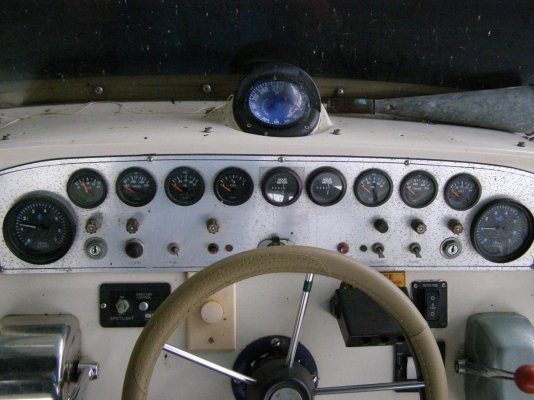The other "object" is the low oil pressure alarm switch. ......
Yes, I thought of that also.
NEWS FLASH:
While walking the docks today, I ran into some Great Loop cruisers. One guy was waiting for parts for his tranny. We got in conversation about my problem also. Turns out him and his buddy are a bunch of old farm boys and have been working on engines all their lives. They offered to stop by and so they did.
I started engine while one guy stayed on the dock looking for oil in the exhaust water - non. After about 5 minutes or so, he came back on the boat. He looked for oil leaks in the oil cooler and found none. Then he took off one end of the fresh water cooling hose at the heat exchanger end and struck his finger up the hose feeling for any oily residue none. Then he checked the oil dipstick for any signs of gas in the oil - none. Then we restarted the engine and let it run for about 15 minutes. The gauge went from 55 down to 45 PSI and he didnt seem concerned. Then after a while he removed the valve cover and was inspecting the oil in there - it was wet with oil and he was convinced the oil pump was pumping. All the while they were listening to the engine and both agreed that all sounded really good.
Next, we started the other engine while the first one was still running. They were comparing the oil wetness and whatever from the Port Engine - the one we just started to the Stbd Engine (the one in question). Both were running and oiling exactly alike. By now, the Stbd engine was down to about 40PSI. they raised the throttle and the gauge went up some. After that they just listened and felt around. Their final prognosis: If it was their boat and they were planning to head out on a 1200 mile journey with little to no mechanics along the way, they both said that they would not hesitate to just go.
They would monitor the engine closely, but were not concerned about it.
That made me feel much better. These guys seemed to be as good of mechanics as anyone else around.
Right now, I have both engine room blowers running off the battery of the engine in question. It is reading 12V while the other is reading 12.5 V DC.
This does somewhat come into question and the other day was the first real
run of the boat since the new gauges. This made them question this item even though this was the same way before the gauge swap.
Anyway, I just back from Advanced auto with a mechanical oil gauge.
plans for tomorrow or Wednesday:
1). Remove "T" , check for any kind of blockage and then insert mechanical oil gauge directly to engine. Run engine if all is good, then I will test the sender alone and then with the tube and the low pressure alarm.
2). If all tests good, I will then swap the sender wires to test to see if the gauge is the problem.
Thanks for all of the great suggestions and please keep them coming.



